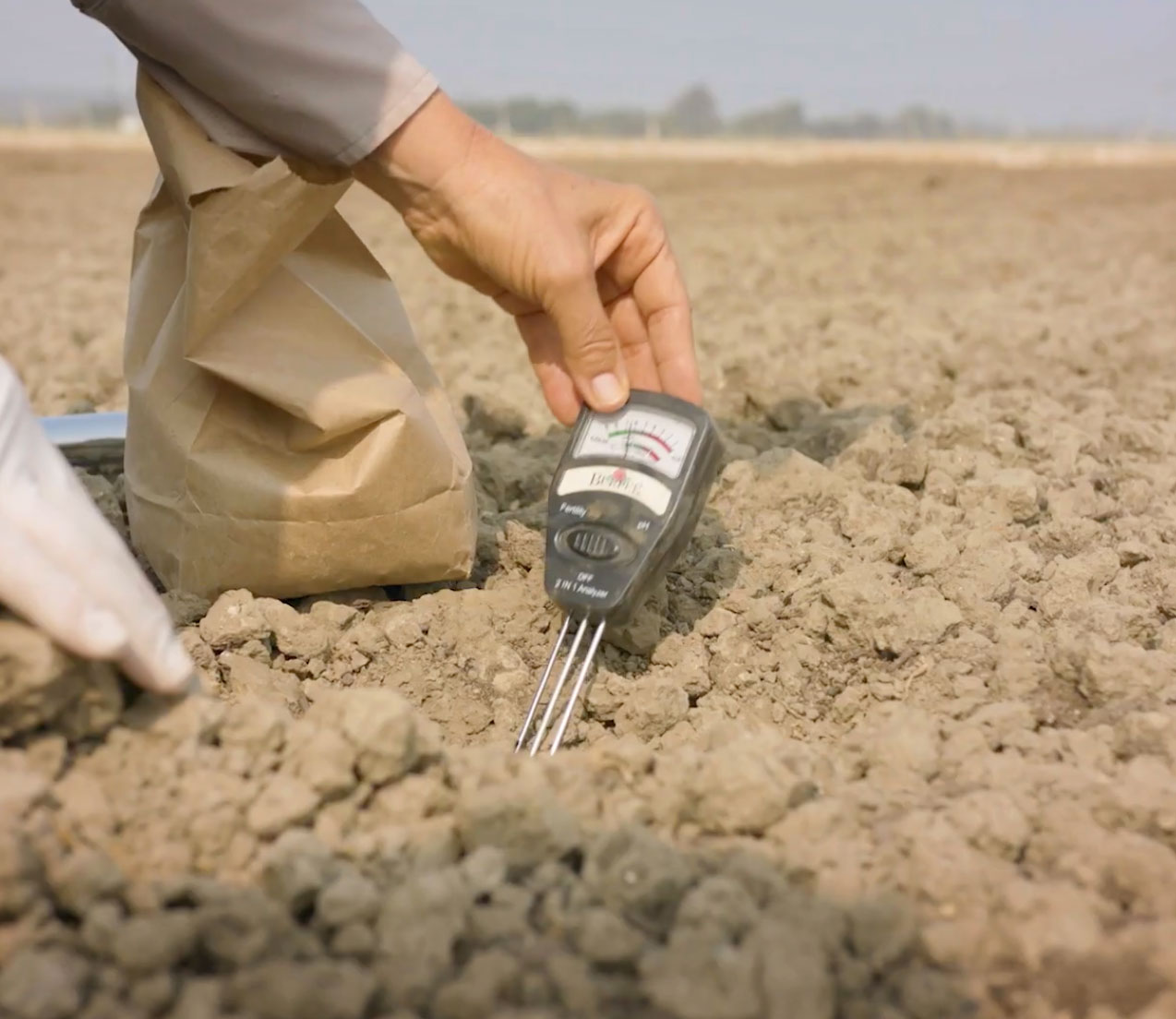For almost 40 years, Gills Onions has been passionate about two things: producing the best onions on the market and exploring agriculture practices and technologies that maximize sustainability and preserve our earth for future generations.
Every great onion starts with dirt. Healthy soil makes healthy onions. That’s why we embrace conscious farming practices that reduce our impact on the environment, pioneering a culture of eco-friendly farming in the industry. Our seed-to-package process takes into account every phase of an onion’s journey from the field to your table. But there is always more to learn about and do for our earth!
Our mission is to change the way our industry approaches farming. What if instead of simply sustaining our planet, we could regenerate it?
Connecting Soil Health and Climate Change
Regenerative agriculture is the latest advance in conscious farming. The concept is simple: All living things and many industrial practices release carbon dioxide into the atmosphere. Through photosynthesis, plants pull the carbon dioxide out of the air and use it to grow, releasing clean oxygen in the process. The levels of carbon dioxide in the air are higher than ever before, but under the right conditions, plants could pull that carbon dioxide out of the air and into the soil. This would reverse the effects of climate change and restore the soil’s natural organic carbon content. Regenerative agriculture creates healthier plants, soil, and air all at the same time.
It may sound too good to be true, but the process is absolutely natural. It’s what the earth does by itself every day, but regenerative agriculture asks humans to give our planet a hand.
Traditional agriculture practices like tilling and plowing, using fertilizers and pesticides, and repeatedly growing the same crops in the same dirt year after year slowly degrade soil and release the soil’s carbon into the air. Around the world, fields have already lost a large percentage of their original carbon content. And, up to a third of all greenhouse gas emissions come from the food industry, with nearly 80% of that number coming from agriculture.
As National Geographic explains, “Regenerative farming practices like no-till cultivation, cover crops, and crop rotation keep the carbon in the soil, where it builds over time. In turn, carbon-rich organic matter feeds healthy plants.”
International groups like The Terraton Initiative are working to help farmers all over the world embrace regenerative farming. The Terraton Initiative’s goal is to capture one trillion tons of carbon dioxide from the air and restore it to the soil through regenerative farming. The idea is that by restoring lost carbon to all 3.6 billion acres of farmland used for growing crops on the planet, about a trillion tons of carbon would be pulled out of the atmosphere — reversing the effects of climate change.
Regenerative agriculture starts with each individual farmer, and the benefits speak for themselves. Farmers who embrace regenerative methods see carbon levels rise in their soil, creating healthier crops with more nutrients.
Your Power as a Consumer
Why don’t farmers everywhere immediately embrace regenerative agriculture? The average farmer makes a living based on volume — how much of a product they can produce — and not based on quality or how sustainable their farming is.
Transitioning to regenerative farming practices has a cost and the risk that yields could drop in the beginning before farmers see results.
That’s where you, the consumer, comes into play. While groups like The Terraton Initiative incentivize farmers with carbon credits, you can support regenerative farming with your business. By purchasing products produced by farms who employ regenerative agriculture methods, you hold the supply chain accountable and show your support for conscious farming.
How do you know if your food comes from an organization that is dedicated to regenerative farming?
Start by knowing your local farmer. Find a farm focused on sustainability in your area and look for their products. Then, do your research. Being a responsible consumer means finding out who produces the products you use every day and how they do it.
Celebrate Earth Month With Gills Onions
We don’t have to sit around and wait for new technology or groundbreaking scientific research to change our earth for the better. We only have to decide to make it happen — and you can start today! Here are a few simple ways you can support a healthy environment:
- Employ regenerative farming practices in your own garden
- Join a local CSA or purchase fresh produce from area farmers at the farmer’s market
- Become a soil advocate
- Start a compost pile or bin for food waste
- Get to know your local farmer, and ask how you can support their efforts
- Recycle and reuse
- Buy eco-friendly household products
- Don’t idle your car
- Collect rainwater, and use it to water your houseplants
- Calculate your personal carbon footprint
- When possible, walk or ride your bike instead of driving
- Start your own zero waste challenge
- Plant a tree
Remember, every step, no matter how small, is one in the right direction — toward a healthier world for all of us.
Ready to try onions grown “The Gill Way”? Contact our sales department to learn more.

